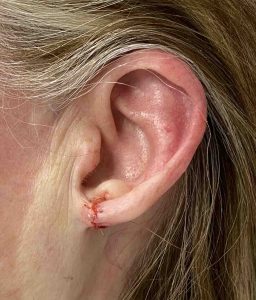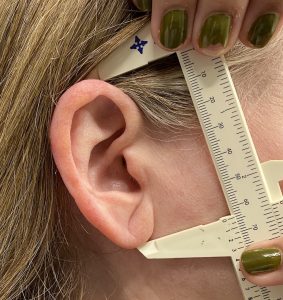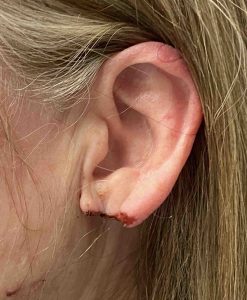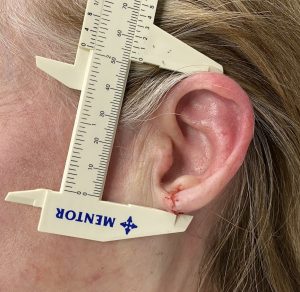Background: Reconstruction of the ear from traumatic injuries, cancer resections and congenital deformities has a long history of numerous techniques available to do so. But the hardest part of the ear to successfully create or rebuild is its smallest part, the lobule. This suspended piece of skin and fat lacks any cartilage support and its inferior location gives it a very distinct appearance from the rest of the ear.
Traumatic injuries to the earlobe often result in lacerations and tears but rarely loss of significant parts of it. In partial amputations there often is enough tissue left to create a reasonable looking lobe appearance that may not be significantly different in size from the uninjured ear. But in more significant traumatic amputations a successful and more normal looking earlobe is not possible.
There are techniques described to replace a lost earlobe using local tissue flaps. Bilateral inferiorly-based dermal flaps can be rotated and out together to create the two skin sides of the lobe. Due to the adjacent skin the color match is best. But some contracture of the rotated flaps is likely and they may ultimately end up losing like a patch of a mismatched patch of skin hanging off the end of the ear.
An alternative strategy is to perform a primary repair by advancement of the helical rim flap over the defect. This will result in a much shorter size of the ear which will ultimately require shortening of the opposite earlobe for a better match. Such an approach works best in the older patient who may have naturally longer or lax earlobes due to aging.


Ultimately she will require a right earlobe reduction which could be as much as 8 to 10mms to get close to the size of the repaired left ear.
Case Highlights:
1) The lobule is the most prone part of the ear to suffer amputation due to its lack of cartilage support.
2) Despite its small size reconstruction of a lost earlobe is challenging as any local skin flaps cause their own visible scarring.
3) Primary closure of lobule loss can be done by a helical rim advancement flap albeit with a less long ear.
Dr. Barry Eppley
World-Renowned Plastic Surgeon




